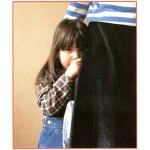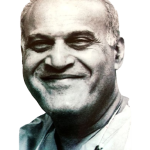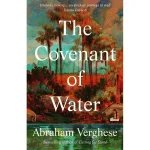
Consequent upon the expulsion of the Portuguese from Bahrain at the beginning of the 18th century and the lack of any maritime authority in the Gulf, the Qawasim – the tribe inhabiting the Arabian Peninsula who originated from Qishm Island – tended to dominate this region. During the latter part of the 18th century, a new force, the Wahhabi Sect, was rapidly gaining strength in Arabia and in the early part of the 19th century, they finally established themselves. In 1809, the Bombay Government despatched a naval and military force which suppressed the troublesome skirmishes at ports now known as the Pirates Coast. It was by 1819 that the East India Company despatched a large force under the command of Major General Sir William Grant Keir, finally calming the region down.
In January 1820, several leaders signed the General Treaty of Peace. This treaty was followed by supplementary agreements banning piracy, gun running and the slave trade. Finally, in 1853, a Treaty of Peace in Perpetuity was tabled and signed. Thus, the name was changed from The Pirates Coast to The Trucial Coast. The flags of the seven Trucial States (now the United Arab Emirates) incorporated red and white colours, derived, it is believed, from the blood-red of the Qawasim and the symbolic whiteness of the General Treaty of Peace. Dubai’s flag is rectangular, one quadrant white, three quadrants red, the white nearest to the mast.
In 1833, a section of the Bani Yas tribe, established an independent state at Dubai. Despite a succession of wars with neighbouring states during the rest of the century, Dubai retained independence and the relative decline of Sharjah (due mainly to the silting of the Creek), and the influx of Persian merchants from Lingah in the early years of the century, laid the foundation of the present prosperity. An architectural legacy from the Persian influence remains in the form of the remarkably efficient and decorative towers known as “badghir” built above houses and open to the four quarters, to catch the breeze from whichever direction it might be blowing and conduct it down into the building below.
G.E. Chapman, who was appointed Wakil (Agent) of the small office of Gray Mackenzie (now MMI), recalls the initial slow but steady progress of modernising Dubai. There were only two or three electricity generating sets at that time of which Gray Mackenzie was lucky to have one 3-kilowatt machine for lights and fans in the office and home. At night, Dubai would otherwise ‘black out’ after supper, and the guards would man seven watch towers strategically built around the town as a basic security system. After dark they would call to each other in a distinctive way but within an hour or so, sleep would take over. One of the ‘childish’ forms of amusement would be when the Wakil had a dinner guest and after dinner they would walk to the roof and imitate the guard’s call. The guards were up in seconds and resumed their duty until they fell asleep again. Another nocturnal custom during Ramadan was the parade through the alleyways of Bur Dubai of a one-legged drummer, arousing sleepers to start preparing the suhoor – the early morning meal.
The Ruler’s guards, or followers, were the only instruments of law when the need arose. A military unit, the Trucial Oman Levies, stationed in Sharjah, was raised in 1951 to deal with the disputes between the Emirates over boundaries, wells and date palms. It was later known as the Trucial Oman Scouts and in 1955 participated in the eviction of the Saudi Arabian army that had occupied part of the Buraimi Oasis four years earlier. Despite the absence of any real crime, with signs of growth, a Police Force was formed in 1958.
The infrastructure was extremely limited but several of the basic facilities were in position. A small office of the British Postal Service from Bahrain handled mail needs and a branch of the Bank of Iran and the Middle East (B.B.M.E.) was established in Deira in the late 1940’s. At Sharjah, International Aeradio managed air traffic for The Royal Airforce and also maintained a telegraphic link with the outside world. The other British residents in Sharjah were members of the DL&S (Desert Locust Survey) – controlling swarms of locusts which were more prevalent at that time.
The Gray Mackenzie generator provided the only navigational aid to vessels in the form of a 200W bulb mounted on top of the office flagstaff. It was the night watchman’s job to start up the generator early morning if a ship was expected. Admiralty charts recorded this light to be ‘unreliable’ which was just as well as the watchman often overslept. Nevertheless, the Commander of the M.V. ‘Dara’ once reported citing it 13.5 miles away to a proud agent who carefully tended it and religiously replaced hard-to-come-by bulbs until its welcome glean was finally lost among the myriad of street lamps and neon signs that flooded the town with the advent of mains electricity in the early 1960’s. At about the same time, the telephone system was installed in the town as was the beginning of fresh water distribution from wells in Awir and the first bitumen surfaced roads. Amongst other developments to follow, these were milestones in the dedicated determination of the Ruler, Sheikh Rashid, to drag Dubai, however abruptly, into the twentieth century. The results even surprised him, as he remarked on more than one occasion.
The fortnightly calls of the British India Steam Navigation Company’s mailsteamers sailing between Bombay and Basra were the highlight of the month as they served as the only means of travel until Gulf Aviation, founded by a Freddie Boswordh in Bahrain and the forerunner of Gulf Air, inaugurated a weekly service to the small Royal Airforce staging post in Sharjah in 1951. After the look out on the office roof reported sighting the vessel’s smoke on the horizon, two or three small launches dangerously over-loaded with labour, passengers and visitors would await the ship anchoring offshore and then ‘storm’ aboard to commence discharge of cargo, meet relatives, steal fresh water from Bombay or generally conduct private trade with passengers and crew. It was on such a call on MV ‘Dara’ on 7 April 1961, that a sudden storm necessitated the vessel leaving the anchorage and proceeding to sea with everyone from ashore still onboard. Early the following morning, near Abu Musa Island, whilst returning to port, there was a violent explosion, and fire on board, caused, it is believed, by a landmine that was being smuggled by a member of the Omani group – supported by the PFLOAG Movement which was in rebellion against the Sultan of Muscat, the vessel’s next port of call. Over 200 passengers and crew, visitors and labour from Dubai were lost in this disaster and there arose the logistical problem of coping that night with over 300 bereaved, wet and shocked men, women and children, arriving by rescue vessels – where there was not even a building large enough to accommodate a fraction of that number. This can now hardly be imagined in this present land of plenty. Later in the year, and in 1962, there were explosions of two other mail steamers, but with less serious consequences and several small bombs around the town, including Beyt Wakil. A DC3 airliner of India, Kalinga Airlines, also disappeared without trace, a few minutes before it was due to land at Sharjah, all presumably the work of the same dissidents.
Development of Dubai during the 1950’s was beset by an inherent defect in its principal asset, namely, the increasing, silting of the Creek entrance. Not only was the movement of tugs lighter and coastal trading hampered, but serious accidents giving rise to loss of life were occurring to boats trying to find shelter during the vicious North-Westerly winds (‘Shamals’) which can savage the Gulf during the winter months.
There were numerous calamities which seemed disastrous at the time but are now, in retrospect, amusing; one being during a storm when a barge loading dry fish broke away from the vessel and remained stranded on the beach, where Port Rashid now lies. It filled up with sea water and after mixing with 100-tonnes of dried fish, the resulting aroma, blown by the wind, drove half of the residents of Shindaga and Deira into the desert. The agent was shunned by the public for many days after the event.
The Ruler was well aware that the future prosperity of Dubai lay in its trading potential and raised finance to carry out a modest programme of creek improvement. Completion of the creek entrance in 1959 saw the beginning of a decade which turned Dubai into what it is today; from a sleepy desert port into a flourishing and modern trading centre, with the population of 60,000 in 1960 growing into about 3.5 million today. From the insignificant volume of imports landed by wooden boats in the 1950’s, the modern facilities of Dubai have become major trans-shipment centres for both the Middle East and the Sub-Continent. There is every reason to hope and presume that Dubai and the United Arab Emirates as a whole will sustain this remarkable rate of progress and add to its colourful, if comparatively brief, history.




